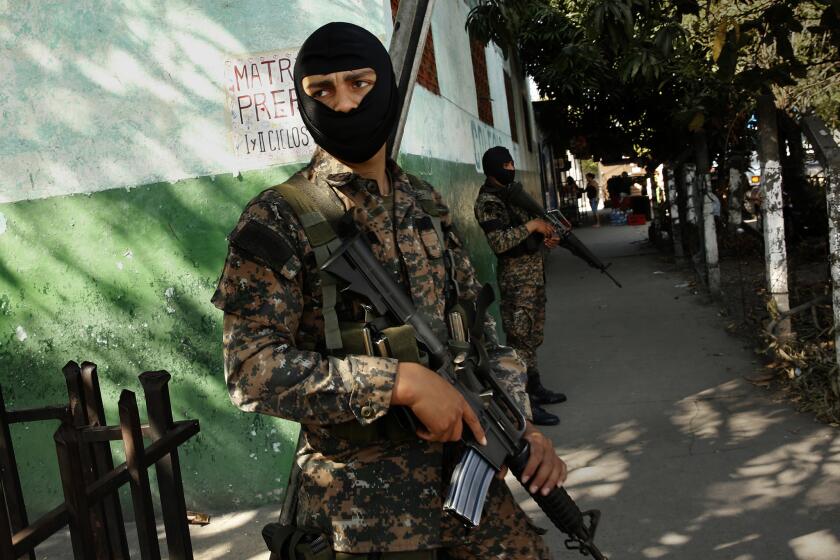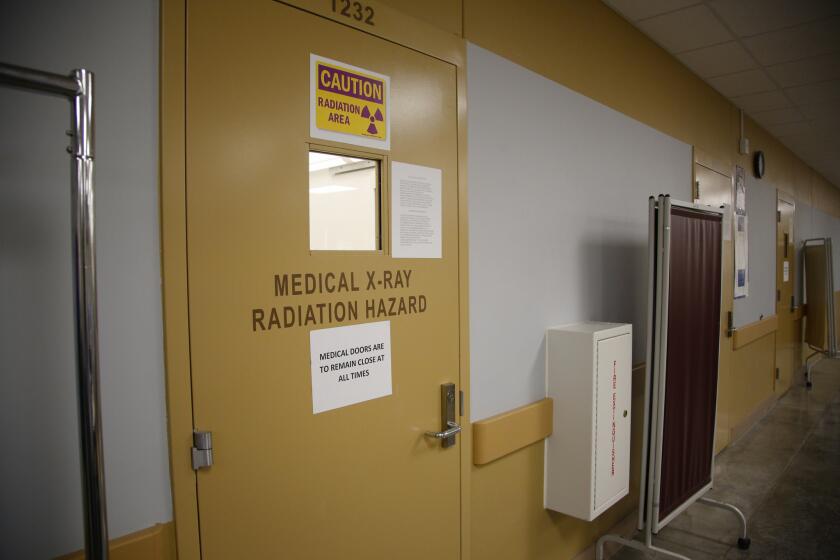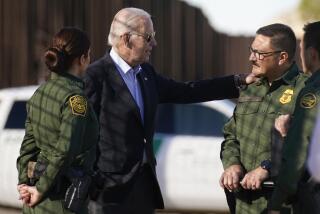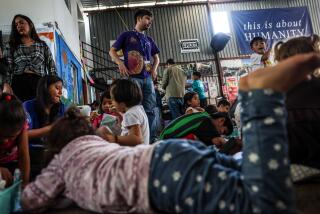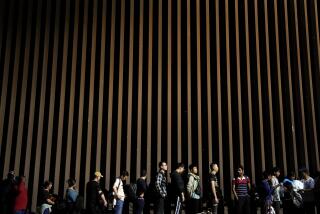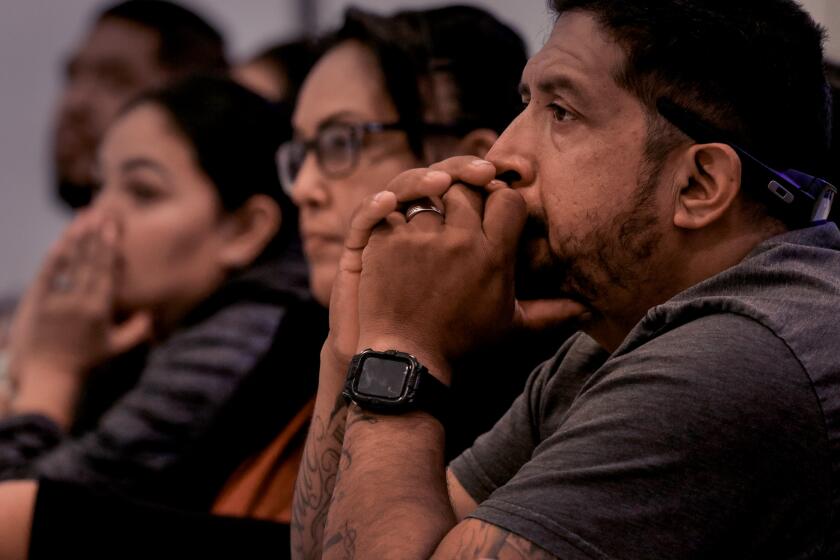Trump administration, citing coronavirus, expels 10,000 migrants in less than 3 weeks
WASHINGTON — The Trump administration has quickly expelled roughly 10,000 migrants to Mexico and other countries in less than three weeks since imposing its most severe immigration restrictions yet in response to the coronavirus outbreak, officials said Thursday.
After the United States and Mexico last month closed their border to “nonessential travel,” U.S. officials began rapidly removing almost all migrants arriving at the border, with minimal processing. For the first time, those turned away en masse include people seeking asylum as well as hundreds of lone migrant children, both groups that are protected by U.S. law.
The actions reflect how the administration — in response to the pandemic — is taking steps toward achieving some of President Trump’s long-sought goals restricting immigration, in this instance barring asylum seekers and unaccompanied children from entry into the United States, and with an end-run around the laws and bureaucratic requirements.
Administration officials said they were acting to protect U.S. residents according to guidance from the Centers for Disease Control and Prevention.
“This is not about immigration,” the acting commissioner of the Customs and Border Protection agency, Mark Morgan, said repeatedly in a call with reporters. “Right now this is purely about infectious disease and public health.”
The unprecedented new steps go beyond existing policies such as one known as “Remain in Mexico.” Under that policy, more than 60,000 asylum seekers had to wait on the Mexican side of the border for immigration hearings in the U.S. Now, with rare exception, migrants do not get the chance to seek protection in the United States, including those attempting to enter at official entry points.
Officials cited a CDC order on March 21, when Director Robert Redfield suspended travelers from Canada or Mexico for 30 days, based on a law dating to 1944, and wrote that “the existence of a communicable disease in a foreign country or place creates a serious danger.”
Morgan said asylum and other humanitarian protections are still available to migrants seeking refuge in the United States. Those who show “an appropriate level of fear,” he said, “will be processed on a case-by-case-basis.”
Street gangs in El Salvador have turned from extortion and killing to enforcing social distancing restrictions, often with threats and baseball bats.
The numbers of migrants whom U.S. officials have encountered at the southern border in recent weeks have fallen sharply from a high last spring to among the lowest levels in decades. Morgan said most of the arrivals have been adult males from Mexico, followed by Central America’s “Northern Triangle” countries of El Salvador, Honduras and Guatemala.
The danger is potentially greater for them north of the border. The United States is the global epicenter of the pandemic, with more than 460,000 confirmed cases of COVID-19, the disease caused by the coronavirus, as of late Thursday. Mexico and the three Central American nations combined have fewer than 4,000, less than 1% of the U.S. total.
Democrats in Congress have criticized the administration’s actions. A group of senators assailed the Department of Homeland Security for a “power grab” at the border “under the guise of a global pandemic response.”
“We are deeply concerned that DHS is blatantly misinterpreting its limited authorities” under the CDC order, Democrats on the Senate Judiciary Committee wrote to acting Homeland Security Secretary Chad Wolf on Tuesday. “A public health crisis does not give the Executive Branch a free pass to violate constitutional rights, nor ... operate outside of the law.”
Morgan said U.S. officials at the border are acting in ways to minimize contacts with and among the migrants. To avoid transporting and then holding them in facilities not equipped for quarantine or social distancing, as the CDC recommends, Border Patrol agents are instead conducting basic medical assessments and taking biometric information, then immediately returning the migrants to the nearest point of entry, in coordination with Mexican authorities. Those not sent to Mexico are flown to their home countries.
At least six ICE detainees and five facility employees at the Otay Mesa Detention Center have tested positive for the infection
About 80% of migrants are being returned “within just a couple hours,” Morgan said. His agency, Customs and Border Protection, has fewer than 100 migrants in its custody, which he called “the intended impact of the CDC order.” Last year the agency held roughly 19,000 at the peak, provoking an overcrowding crisis.
Officials on the call declined to provide the total number of children without guardians whom U.S. officials have removed since March 21, but as of April 1, nearly 300 had been expelled, according to Customs and Border Protection spokesman John Mennell. Receiving countries are indicating a dramatic increase. Guatemala received about 100 unaccompanied minors in the first week of April alone, as many as it took in during all of March.
When a migrant arriving at the border claims fear of persecution or torture in their home country, Border Patrol personnel typically refer them to trained asylum officers from the U.S. Citizenship and Immigration Services agency for screening, the first step in the long process of applying for protection in the United States.
Administration officials have not said how Border Patrol agents quickly make that assessment whether to refer a migrant to an asylum officer rather than simply expel them, and Customs and Border Protection declined to share any guidance given to its agents. Asylum officers have yet to receive any direction on the new measures, officials told The Times.
A leaked Border Patrol memo obtained by ProPublica described only one humanitarian exception to expulsion: if the migrant “spontaneously” makes a “reasonably believable” claim to an agent that he fears torture in his home country. That potentially would allow one to stay in the United States under the international Convention Against Torture, but the standard for proof is higher, and it provides a less secure status than asylum for remaining in the United States.
Since March 21, asylum officers have continued to receive referrals of migrants for screenings of their fear claims, meaning the Border Patrol is “letting some people in,” according to an employee at Citizenship and Immigration Services who spoke on condition of anonymity to protect against retaliation. But instead of the usual hundreds of referrals a day from detention centers in Georgia, New York, California and Arizona, the daily total is in the single digits.
Administration officials as well as their foreign counterparts initially had suggested that the policy would apply to migrants other than asylum seekers or unaccompanied children, and that Mexico, for example, would not accept noncitizens.
Morgan acknowledged that the coronavirus poses a “serious danger” to migrants as well as Homeland Security personnel and the broader public.
According to an internal report of the Department of Homeland Security obtained by The Times, more than 9,000 employees have been sidelined by COVID-19. More than 600 have tested positive. The department has yet to publicize, to its employees or the public, the total number of confirmed coronavirus cases among its roughly 240,000 employees or 34,000 migrants in its custody.
The detained population has dropped sharply in recent weeks. Immigration judges, lawyers and advocates have called for migrants to be released from often overcrowded, unsanitary facilities that experts describe as “Petri dishes” for the virus. Amid a broader review, as of March 30, Immigration and Customs Enforcement had identified 600 “vulnerable” migrants in detention and released 160.
Separate from immigration enforcement at the border, Morgan said that at airports and seaports, Customs and Border Protection officers have referred more than 268,000 people returning from coronavirus-affected areas to the CDC.
International travel has dropped by almost 98%. At land borders, noncommercial traffic is down more than 70%, and about 75% for pedestrians, accounting for almost 400,000 fewer people entering the United States each day.
More to Read
Get the L.A. Times Politics newsletter
Deeply reported insights into legislation, politics and policy from Sacramento, Washington and beyond. In your inbox three times per week.
You may occasionally receive promotional content from the Los Angeles Times.
